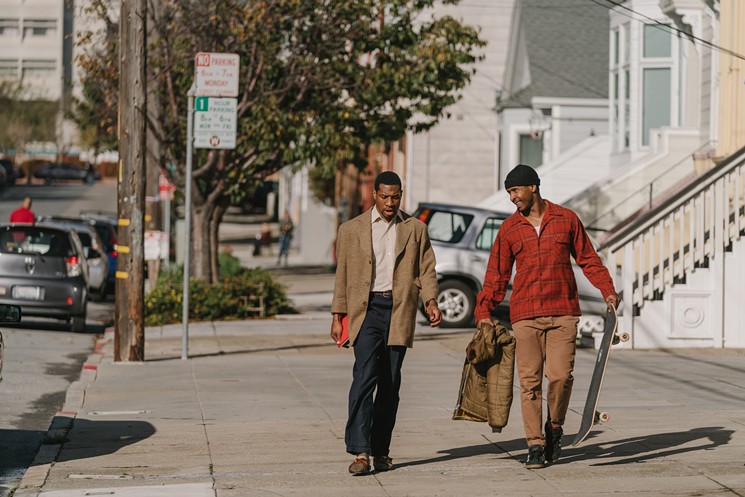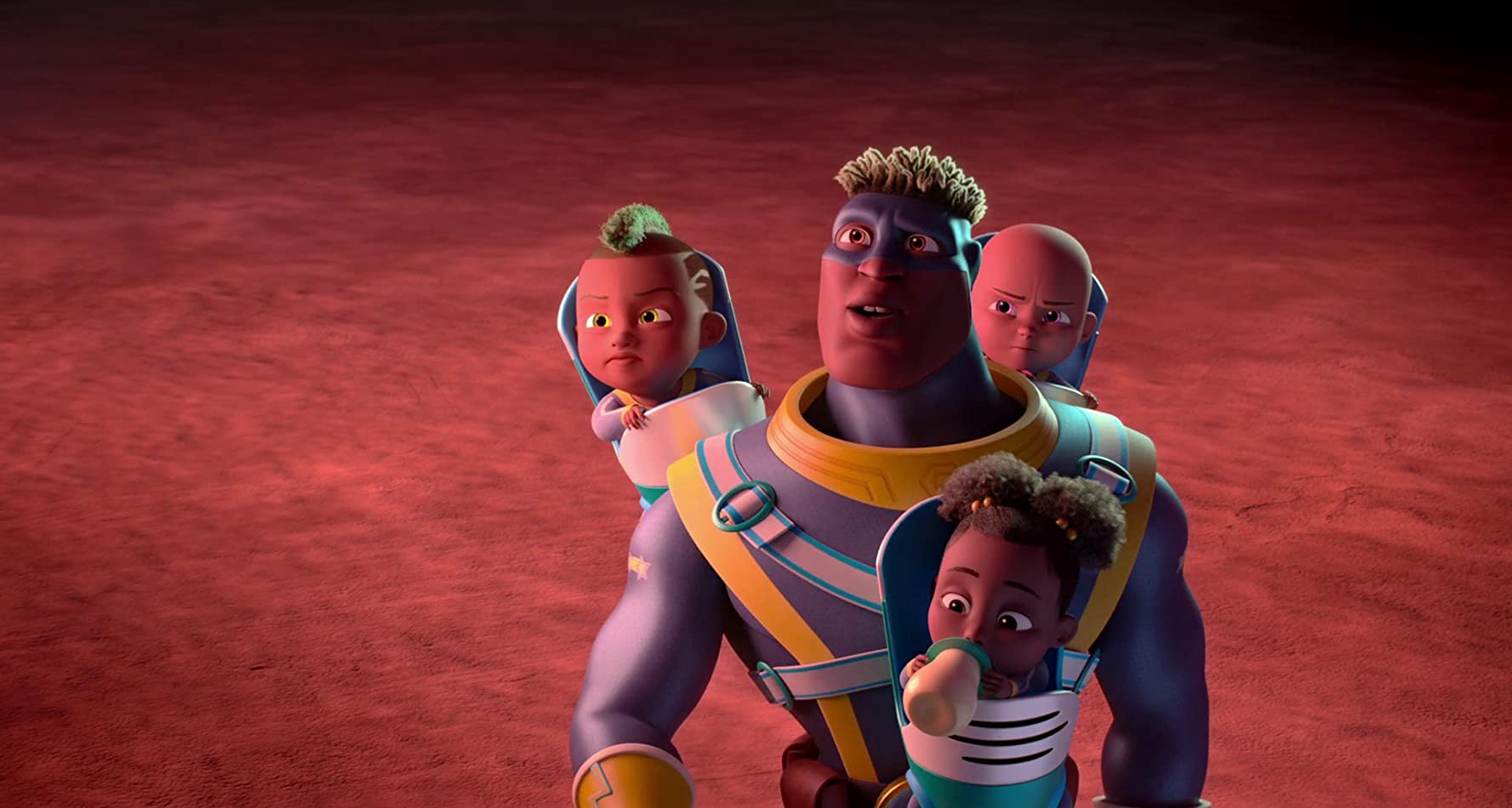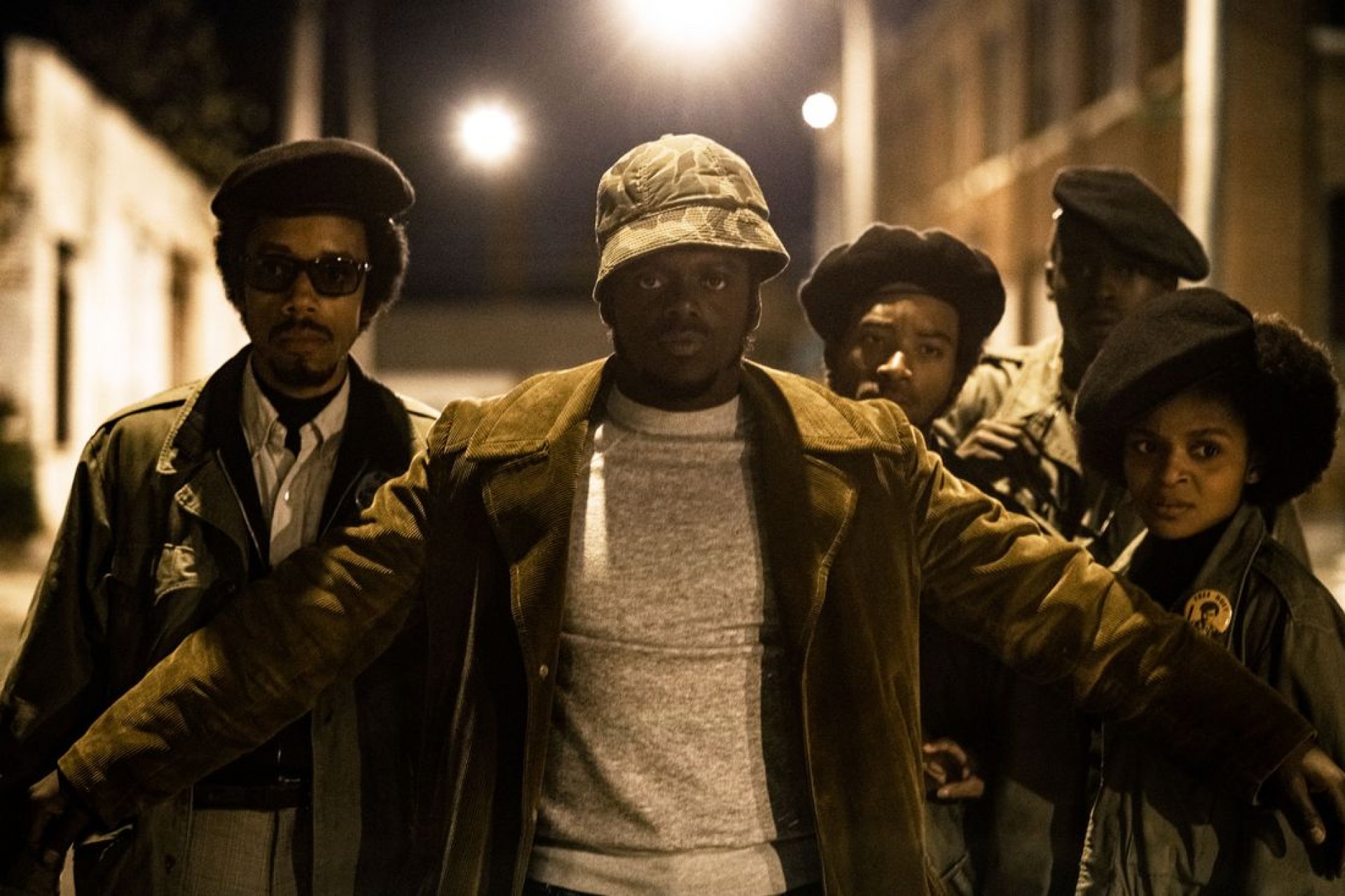Few films cover gentrification. I mean, sure, there were Slums of Beverly Hills, Rent, and The Santa Eviction Clause, but when you think about it, modest folks being forced out because their neighborhood is evolving up just doesn’t have the same draw as “wrongly convicted,” y’know? However, do you want to know my guess? There will be more of these, many more as the middle class continues to disappear.
Jimmie Fails (Jimmie Fails, what were the odds?!) is not just a review of Moonraker, it’s the name of a man who can’t get past his past. Normally, I’d associate such behavior with Trumpers, but it certainly may be true of other types of folks, specifically anyone who has felt the sting of life’s magnificent bait and switch. Jimmie is obsessed with his childhood home, a classic “Painted Lady” near the intersection of Golden Gate and Fillmore in San Francisco (about four blocks from that shot in the “Full House” credits). Ah, but is it an actual Victorian era work of art? See, Jimmie shouts repeatedly about how his grandfather built the house in 1946. Good job, gramps; that house is gorgeous.
I would guess that the Failses failedes to fileses taxes and were evicted several decades ago and now Jimmie spends his free time dragging his pal Montgomery (Jonathan Majors) north and fix up the place when its current owners are away. The current owners don’t like this behavior. Apparently, “The Shoemaker and the Elves” is a tale lost in 2019. Or perhaps I’ll put it this way: what if you came home and found random people weeding your garden and painting the trim on your abode … how would you react?
FWIW, “Painted Ladies,” stylish Victorian Houses crammed into high rent San Francisco neighborhoods, generally sell for about $4M. Your mileage may vary. NPR ran a scandalous story in 2014 about how a buyer “got away with” a mere $3.1M price tag discount. Must have been one heckuva coupon. Montgomery handles fish and writes personal one-man, one-act plays in his spare time; he and Jimmie haven’t got $4M lying around. From what I can tell, these two share a bedroom in the tiny upstairs flat in Hunter’s Point owned by Monty Sr. (Danny Glover).
More than real estate finance or “location, location, location,” The Last Black Man in San Francisco is about dream realization and pursuit thereof. It takes nothing to get behind that motivation; it’s true of almost all film. Jimmie Fails is a one-note dreamer; he wants to get back to the house where he spent his childhood and he’s given up most everything to achieve his dream – he has no family, no life, no money, no love, heck, he even sleeps on the floor, like the townie I knew from college who shared a single with his high school buddy.
Consequently, this is a bit of a one-note film, but despite that fact, The Last Black Man in San Francisco is far from shallow. Jimmie the dreamer and Montgomery the artist are two of the most human portrayals on screen this spring, especially when you clear out all the superheroes. In aloof yet clever direction, they offer a striking contrast with the collection of stereotypes the two must negotiate around just to depart their neighborhood and perform their foolish Fillmore District rituals. As the film wears, it gets deeper; the problems are much more than financial, and not necessarily what you’d expect. I was also a fan of the cinematography which captured parts of San Francisco rarely seen on the big screen (how often can you say that?). I’m not looking for Last Black Man II: The Reckoning, but I’d sure like to see where Joe Talbot, Jimmie Fails, and Jonathan Majors go from here.
♪When the rents go down in The City
And the homeless all clear The Bay
It’s the end of the world, what a pity
Oh, oh, nooooo♫
Rated R, 121 Minutes
Director: Joe Talbot
Writer: Joe Talbot, Jimmie Fails
Genre: Where the heart is
Type of being most likely to enjoy this film: Anyone who can identify with a true underdog
Type of being least likely to enjoy this film: Bullies
♪ Parody Inspired by “Lights”




